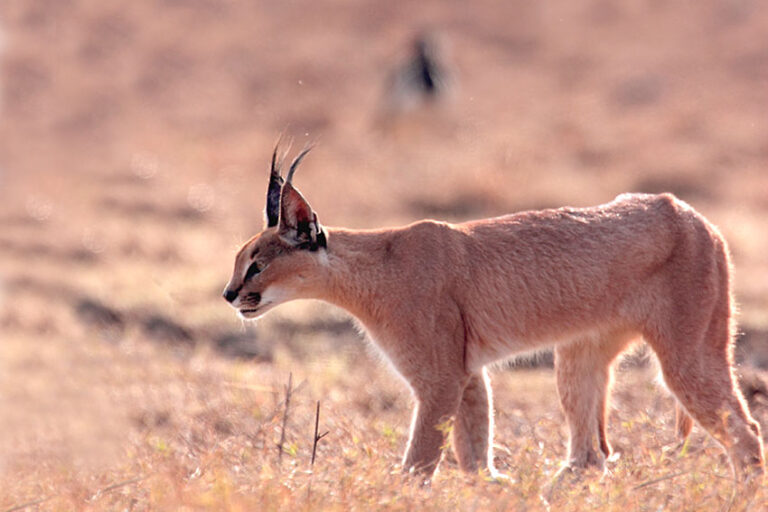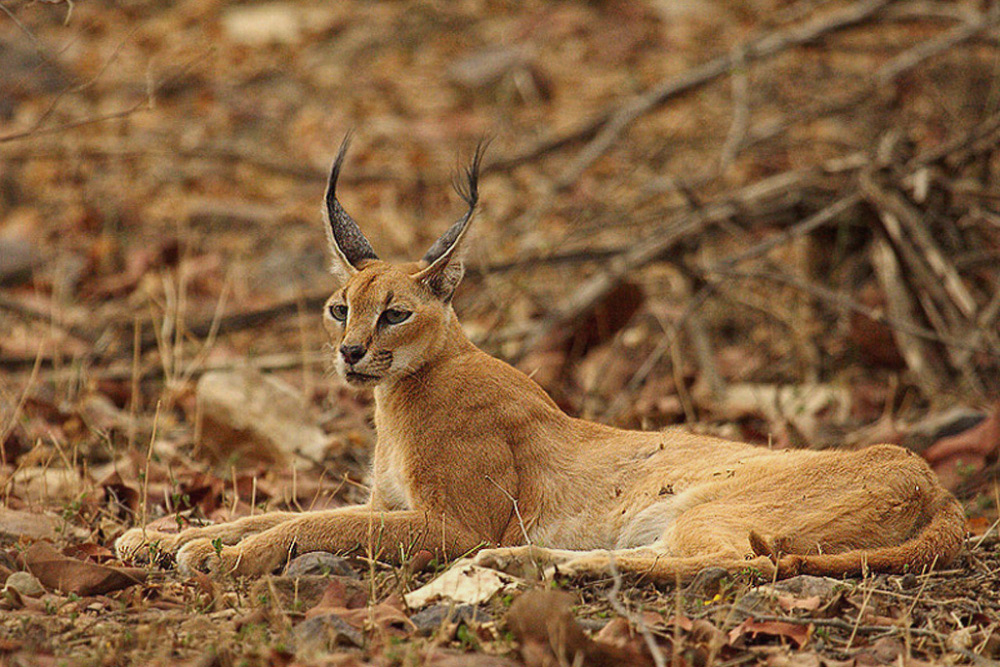Caracal in India: How India lost the Wild Sphinx from its Grasslands
Published on: November 23, 2025 | Last Updated: November 23, 2025
A sudden movement in the grass caught my eye. Was it just my imagination, or were those two curved tufted ears moving above the grass line? Suddenly a slender but muscular dusty brown cat launched itself into the air and plucked a Spotted Dove from the sky. Sadly, this was just a dream I had about my first Caracal encounter in the wild. Since there are estimated to be only 50 in the whole of India. Seeing a Caracal and achieving my goal to ultimately see all the worlds wild cats, will be quite a challenge.

Photo Credit: Gobind Sagar Bharadwaj.
Although Caracal are found in a variety of habitats in western India, they prefer grasslands which now represent a tiny fraction of their former range. This dramatic loss of India’s grasslands in the last 100 years is the major reason behind the Caracal now being listed as critically endangered in India. However, there is hope, and last week a story broke within the conservation movement in India that a new population of Caracal had been discovered in the Ramgarh region of Jaisalmer – the desert city located close to the Pakistan border in western Rajasthan.
Caracal sightings in Rajasthan. What do we know about this newly discovered population in Ramgarh?
Researchers from the Bombay Natural History Society (BNHS) had spent several months in the field trying to find evidence for a wild Caracal population. They have used a combination of fieldwork (which would normally involve camera traps) and first-hand accounts from local shepherds to estimate a population of approximately 10 pairs of Caracal. I think we need to take these figures with a bit of caution as without definite ID’s from camera traps along with scat analysis there is a real risk of overestimating the number of animals. However, the more important point is, can we use the publicity and excitement generated in the conservation world to better protect this beautiful feline?

Photo Credit: Dhamendra Khandal
Caracal range in India. What are the threats, and how do we best protect them?
If you have been lucky enough to visit the stunning hilltop fort at Jaisalmer and explore the surrounding desert, you might at first thing there is nothing there to protect, but you would be wrong. Not only is this home to the critically endangered Giant Indian Bustard – which generally gets more media attention – it is also home to the Indian Caracal.
Humans unfortunately can exploit every type of habitat in the world, from the Arctic Tundra, to the ‘green lungs’ of the Amazon in Brazil, and in nearly all cases leave a trail of destruction behind them, which has severe consequences for the resident wildlife. The wide construction of both wind and solar mega projects in the desert around Jaisalmer threats the ting fragments of Caracal habitat that still exist and urgent action is required to save the species.
At the very least the government of Rajasthan needs to establish a protected sanctuary, using the scientific data to not only protect the existing population, but also to create corridors to decrease the very real chance of inbreeding which occurs when a wild population of cats hits such a low level. Corridors will allow female and male Caracal to move between these areas and increase the genetic vigour of subsequent generations.
Caracal in India: Where to see them and how to plan your trip
I am sure if you have read all of this article so far you may not be feeling too confident about seeing a Caracal in the wild but as with all rare mammal spotting, you will increase your chances by going to the best places, with a top local guide and spending an extender period in this habitat. In addition, although they are mainly nocturnal, they can like many wild cats be seen hunting at dawn and dusk. Since you are not permitted to enter national parks like Sariska and Ranthambhore at this time, it is better to use local knowledge and search on the edge of buffer forests and fragments of grassland to see the Sphinx of India. Contact Allan for a bespoke itinerary so you can follow your dream, like him, to see a wild Caracal.

